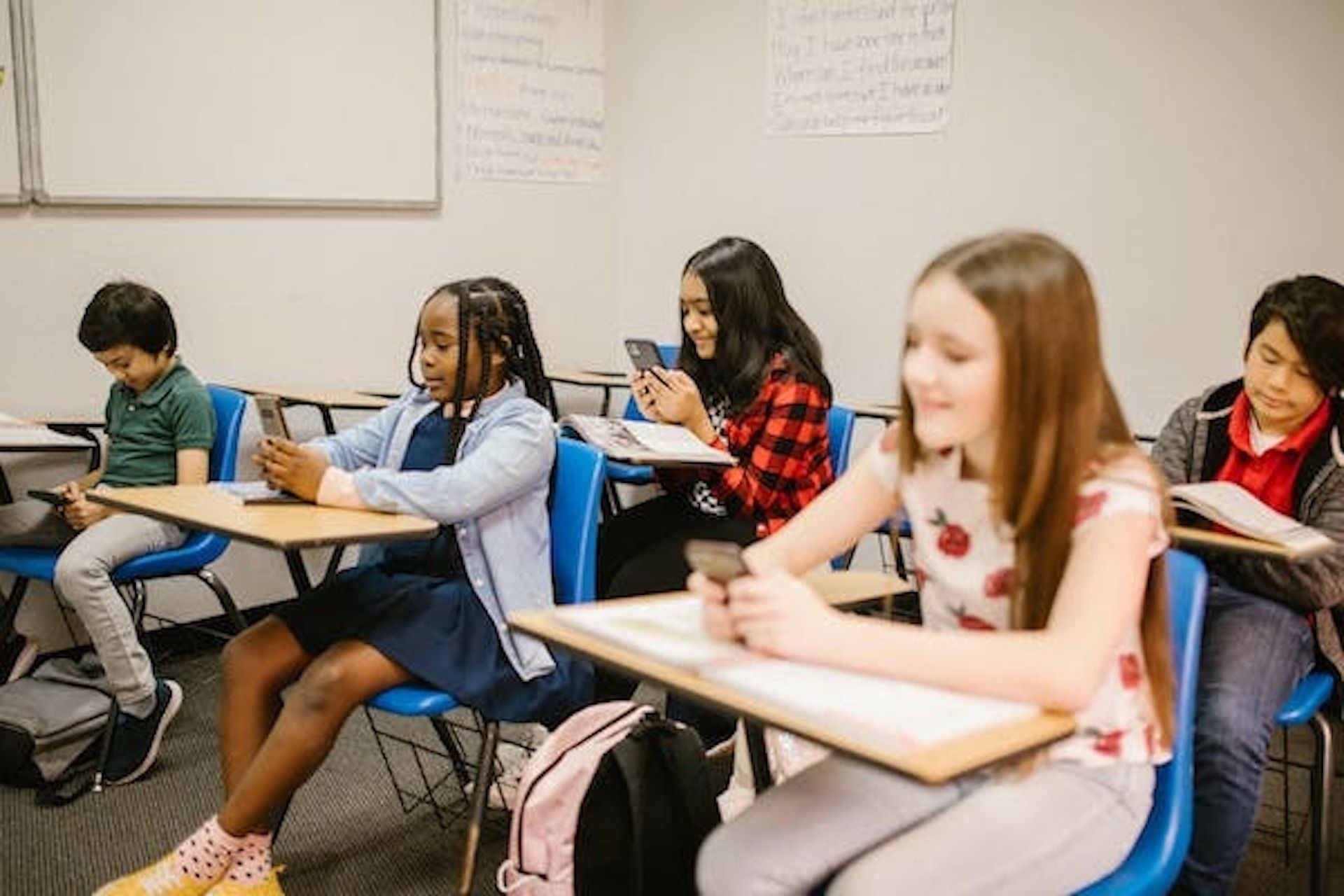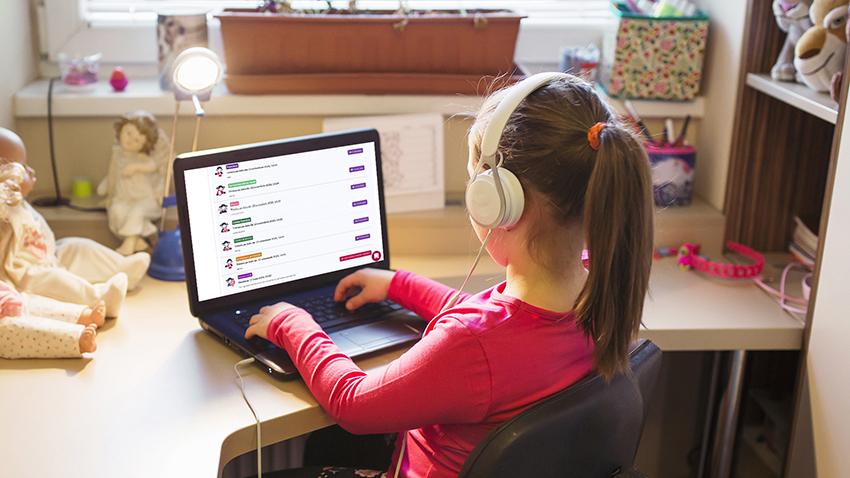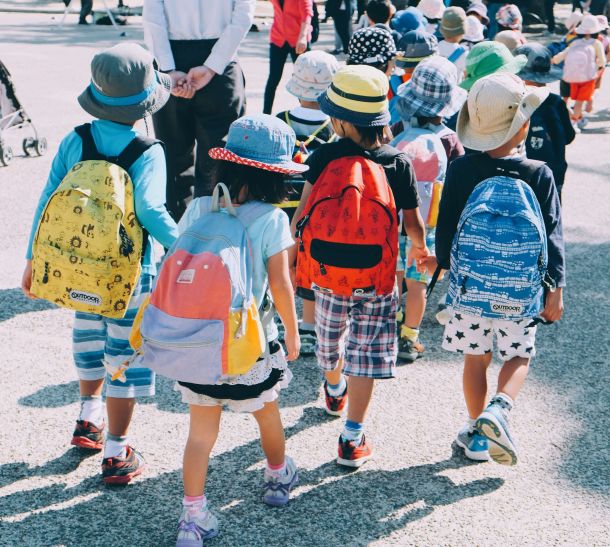
Cyberbullying in schools: What is it and how to prevent it
The greatest dangers for children today are no longer found outside the home, on the street or in parks, but much closer to them: online. Not only do 27% of children spend an average of 6 hours a day online, as highlighted in a Save the Children report, but the diverse forms of online violence, i.e. cyberbullying, in schools or at home also emphasize the need for early intervention by parents, educators, and government institutions.
- 5 facts about cyberbullying
- Forms of cyberbullying in schools
- Anti-cyberbullying measures and activities in school and in the classroom
- 5 ways in which Kinderpedia ensures a positive digital environment
5 facts about cyberbullying
- Cyberbullying is a form of bullying specific to the digital age, which takes place in the virtual environment. It implies posting on the Internet or sending offensive or aggressive messages or images via digital tools.
Although bullying has been a subject of study for over 40 years, cyberbullying only emerged after 2010. Dr. Dan Olweus, a pioneer in anti-bullying programs, initially considered cyberbullying as a secondary and perhaps exaggerated phenomenon due to the lack of well-documented research. However, current realities, including the severe consequences such as children experiencing suicidal thoughts due to exposure to online media, contradict this earlier perspective.
- How much bullying happens on social media? one might ask. A lot, yet less than one might think. According to the aforementioned 2021 Save the Children report, a staggering 99.3% of surveyed minors had a social network profile.
Yet, cyberbullying extends beyond social networks, manifesting through email, direct phone messages, personal web pages, online game chats, and diverse forums. As children spend more time in front of screens, the frequency of online violence has surged, paralleling the diversification of activities in the virtual realm. Age plays a significant role in these trends.
- Due to the way it propagates and the fact that it requires some level of technical expertise, cyberbullying occurs mainly in the urban environment. Middle school or high school girls are the category most often targeted.
- Cyberbullying favours anonymity or false identities and is spontaneous, often gratuitous. As such, the authors are not only harder to identify, but also less likely to feel remorse. Research shows that nearly half of the victims can actually identify the aggressor.
- Similarly to bullying, preventing cyberbullying involves a complex joint effort, which concerns the family, the school and the community of which they are a part, or the public authorities in that space. Parents find it challenging to protect children from online violence, yet they are rarely proactive. As far as schools are concerned, educators and teachers must, first of all, identify forms of violence themselves and prevent them, explained Laura Ion, specialist in Digital Literacy and Online Safety for kids, and co-founder of Parentopolis.
Forms of cyberbullying in schools
Dedicated studies have identified several forms of cyberbullying, depending on the channel where it propagates:
- Verbal abuse - sending abusive messages in person or in chat groups
- Harassment - sending offensive messages repeatedly
- Aggressive stalking (cyberstalk) - a form of online harassment that involves threat or intimidation to various degrees
- Defamation - sending or posting false or untrue messages about a person or group of people
- Impersonation - falsifying a user's online identity in order to post comments that harm that user's image
- Cheating - sending or posting material about a person that contains sensitive, private or embarrassing information, including forwarding private messages or images. Often the user is asked for embarrassing information which is then made public
- Exclusion - actions that result in the exclusion of the user from an online group.
Considering the high supervision within school environments and sometimes limited device access, one might assume that cyberbullying is less prevalent there.
However, as per the Save the Children study, among the 73% of children with Internet access at school, less than half use it for educational purposes. Instead, many engage in recreational or social activities, often during breaks or even discreetly during classes.
Essentially, any child with a smartphone and internet access could, during a 10-minute break, send a sequence of hostile messages to a known victim's account or phone number. The anonymity provided by this setting alleviates any suspicion or traceability.
Anti-cyberbullying measures and activities in school and in the classroom
Let's begin by acknowledging that all research indicates that responding aggressively or violently to a cyberbullying incident in a school doesn't achieve its intended goal of punishing the perpetrator. In fact, it typically exacerbates the situation for the victim.
The increasing digitization of educational settings and children's access to smart devices are natural trends that we, at Kinderpedia, advocate and support. Moreover, experts in cognitive sciences emphasise that restricting children's access to digital tools isn't the solution to combat the prevalence of cyberbullying.
So how can we strike a balance, ensuring children have access to information while maintaining a secure digital environment?
Experts suggest providing guidance in the digital realm, similarly to how parents navigate their children in the physical world. The Save the Children report offers specific guidance for school teams in this regard.
- Establish clear school policies to promptly address instances of aggression, including swift and consistent responses to reports of bullying or cyberbullying. Although identifying the author in school cyberbullying cases can be challenging due to anonymity, having a predictable school strategy can support teachers in handling the situation while providing concrete assistance to victims.
- Engage students and educators in setting explicit guidelines for digital device usage, tailored to the institution's needs or local specifications. For instance, encourage older students to use social media or the internet for school-related activities or community-building but advocate for using protected accounts, firewalls, or specified restrictions.
- Cultivate a safe and inclusive environment both inside and outside the classroom where every child feels respected and valued. Virtual aggressors often exhibit similar behaviour in physical spaces, making them prone to bullying. Creating an unfavourable environment for such behaviour, supported by families and the broader community, can help diminish these acts.
- Provide training courses, conferences, or educational programs for educators focusing on fostering well-being within schools. Platforms like Parentropolis regularly offer bullying and cyberbullying prevention courses for teachers, school counsellors, and parents.
- Facilitate open dialogues among children to express their fears or anxieties stemming from experiencing or witnessing cyberbullying. Some minors, as indicated by Save the Children, may refrain from discussing online bullying experiences, highlighting the need for accessible avenues to address these concerns.
- Equip students with practical examples of online aggression, keywords, effective response strategies, and conflict resolution techniques.
- Consider the needs of vulnerable students, including those with special needs or girls susceptible to bullying. Encourage integration by involving them in group activities that facilitate open conversations, fostering connections among children.
- Provide resources and support for both bullied students and aggressors. Research has highlighted that bullying is associated with increased risks of depression, anxiety, and even suicide among victims (Nansel et al., 2001, Journal of Adolescent Health).
These measures primarily aimed at schools must be supplemented by parental support for their success. Moreover, government backing is crucial, entailing public campaigns and ensuring teachers have accessible and ongoing access to training courses.
5 ways in which Kinderpedia ensures a positive digital environment
Kinderpedia collaborates to establish a secure educational and social setting for all children. Through the platform and mobile apps, we provide a wide array of features that support the development of digital skills within a safeguarded space. Children can delve into teacher-recommended educational materials available to the entire class and engage in group conversations without concerns about exclusion.
- The Newsfeed. It is the place where a school communicates announcements, events or various details related to how the institution operates. Thanks to the intuitive and familiar interface (similar to that of a Facebook wall), but also the notification system, the school ensures that it sends the information to the whole community. In addition, teachers have the opportunity to post on a child's personal wall various achievements, contributing to the student's self-esteem, without fueling unconstructive feelings of competitiveness or resentment among other families.
- Document archive. Teachers can upload recommended information resources, eliminating the risk of students endlessly surfing online in search of information. Parents have permanent visibility over these resources.
- Instant messaging or live chat features with filters and tags. They are a safe way to communicate in real time with the student's family and avoid the discussion getting lost between other communication channels. In turn, older students using the Kinderpedia app on personal devices have a direct and secure channel to get in touche with their teachers.
- The newsletter. It's a very easy way to encourage students' creativity and let them write their own school newsletter with pre-set templates.
- School progress reports. Clearly organised, archived in one place and easy to access with a click by any authorised person, these files provide not only details related to a student's academic progress, but also behavioural observations. Both the student's teachers and support staff (for example, the school psychologist or doctor) have access to these files, as well as the child's family. If a child is prone to acts of cyberbullying that are often aggressive and physical, various conclusions can be drawn from regular observations and appropriate measures can be taken in a timely manner to prevent the behaviour from spreading.
While technological advancements and online platform accessibility can contribute to cyberbullying, the exclusion of digital tools from children's lives isn't the solution. Instead, technology can be a solution, part of a set of broad and well-targeted strategies to prevent the phenomenon by regulating its use in schools and promoting an inclusive and positive environment. In a broader sense, technology can be used to develop public campaigns and educational materials aimed at parents and teachers, thereby increasing their awareness and preparing them to prevent and manage risk situations.

Kinderpedia
The complete communication and management solution for schools and childcare centres.
Simplifies teachers' work and brings parents closer to their children's school progress.
Recommended articles
Want to improve your center quality? Kinderpedia is here to help! Not only do we provide thousands of informational content pieces like blog posts, podcasts, webinars and more, we are also makers of the #1 Rated and Reviewed Childcare Software.







